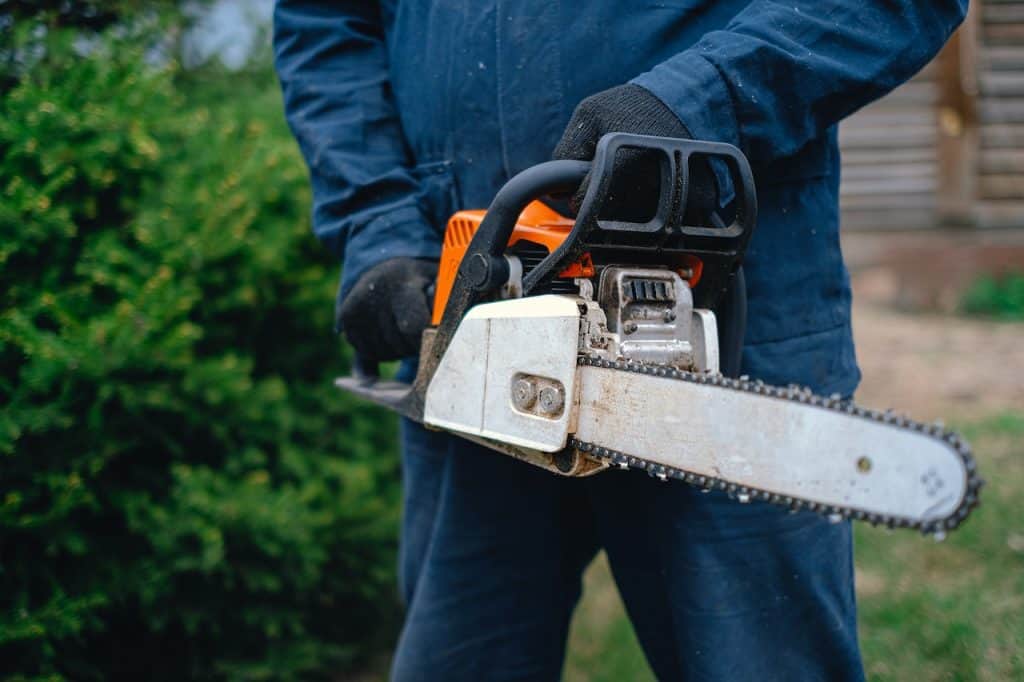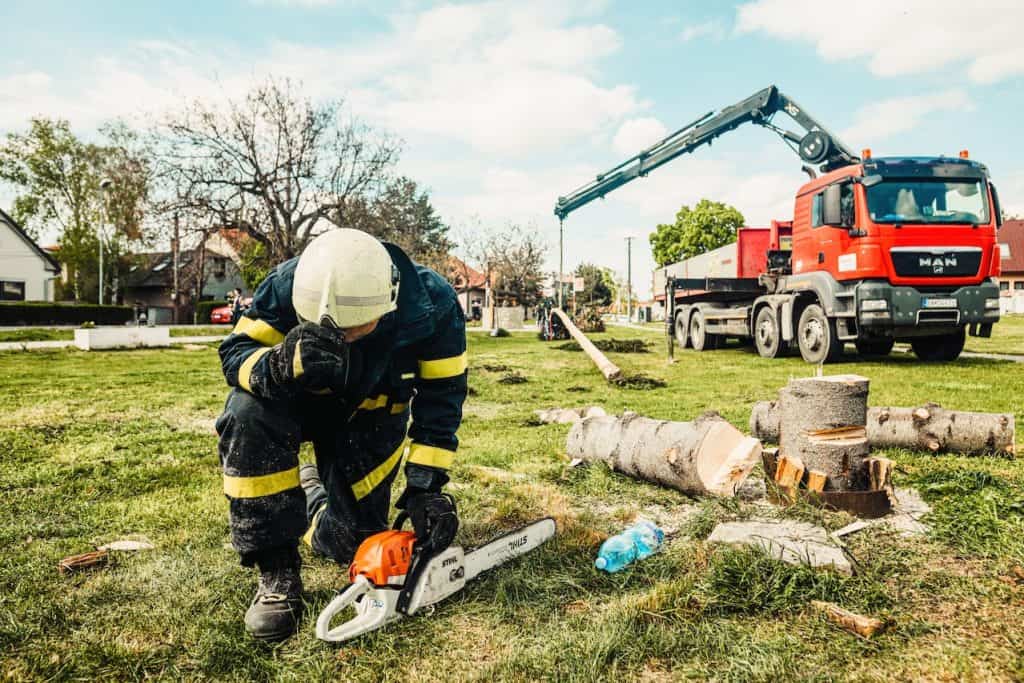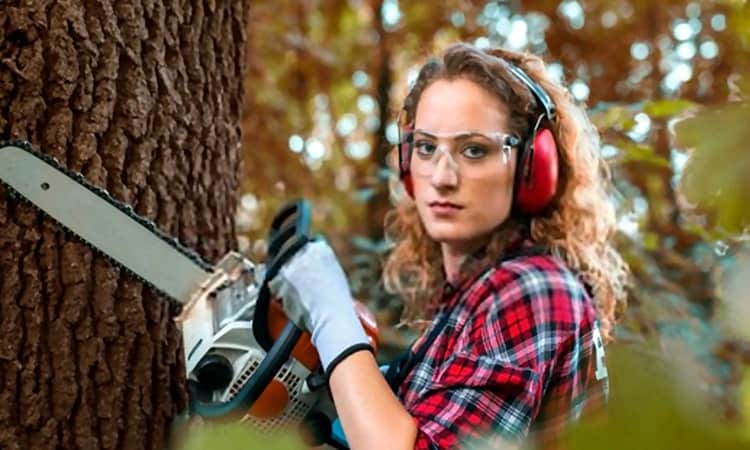Crank seals are important chainsaw parts used to seal the tool’s crankshaft. These seals ensure the oil doesn’t leak out of the engine and prevent dust, dirt, or debris from entering the engine. Many other issues can occur when your chainsaw’s crankshaft isn’t sealed properly, which is why it’s crucial you know how to check chainsaw crank seals!
Contents
How to Check Chainsaw Crank Seals
Chainsaw crank seals consist of two parts. There’s a stationary part, which is fixed in place and made from hard plastic or metal. There’s also a dynamic part, which rotates around your crankshaft and is made from materials like rubber, which provide sealing properties while allowing the crankshaft to rotate properly.

Step One: Thoroughly Clean Your Chainsaw
Start by properly cleaning your chainsaw to make oil leaks easier to detect. This step will also prevent any dust or debris from entering the engine while you inspect the crank seal for wear or damage.
Step Two: Remove the Air Filter Cover
The air filter cover must be removed to access your chainsaw crankshaft. You’ll need to use the right screwdriver to unscrew the screws holding the cover in place. Keep these screws in a safe place while you check the crank seal.
Step Three: Inspect the Crankshaft for Leaks
Inspect the area surrounding your crankshaft for any signs that oil has leaked past the crank seal. You should check for signs of oil buildup or any oil stains. These signs indicate that your crank seal is no longer functioning properly and must be replaced.
Step Four: Clean the Area Around Your Crank Seal
After you’ve inspected the area around the crankshaft, use a clean cloth to clean the area and remove any excess oil or debris that has built up. Doing this will make it easier to check the crank seal. You’ll need to drain the oil from your chainsaw before replacing a worn-out crank seal.
Step Five: Check Your Crank Seal’s Condition
You can now inspect your crank seal’s condition. A healthy seal that still works properly will be smooth and flexible, with no visible cracks. However, a brittle or cracked seal will not be able to function normally and must be replaced.

Step Six: Replace a Worn Out Crank Seal
A clip or ring will be used to install a replacement crank seal. Once you’ve removed the damaged seal, you can carefully press the new crank seal into its seat. Ensure your replacement seal is properly seated and lubricated with the right engine oil.
Step Seven: Replace the Air Filter Cover
After checking your crank seal, you can replace the air filter cover and fasten the screws. If you installed a replacement seal, you must also replace the oil plug and refill your chainsaw with the correct type of oil.
Step Eight: Test Your Replacement Crank Seal
You can start your chainsaw and let it run for a few minutes to test the new seal for leaks. If you don’t notice an oil leak or foul smell, your crank seal replacement was successful.
What Happens When You Don’t Check Your Chainsaw Crank Seals?
Failing to check your chainsaw crank seal can damage intermetal components and pose a safety risk. Here are the possible issues that can occur when you don’t check your crank seal and replace it when necessary!
- Fire Hazard: A failing crank seal won’t prevent oil from leaking out of the engine, which can pose a fire hazard when the oil comes into contact with the chainsaw muffler or other hot surfaces.
- Increased Wear: Many internal chainsaw components rely on the oil supply to reduce component wear. Without the proper lubrication due to a faulty crank seal, the pistons, bearings, gears, and other components will experience increased wear.
- Less Control: Oil leakages can make your chainsaw slippery, making it harder to handle the saw. You can injure yourself when using a chainsaw that’s slippery and hard to control.
- Oil Leaks: Oil will leak out of the engine when the crank seal is worn or damaged, which poses a fire risk and can cause damage to internal parts due to insufficient lubrication.
- Premature Failure: The increased wear on internal components can result in your chainsaw failing prematurely, which can be costly to repair.
- Reduced Performance: Your chainsaw’s engine needs oil to lubricate components and ensure the engine runs efficiently. An insufficient oil supply will cause a noticeable decrease in the engine’s performance, which results in reduced cutting power.
- Unpleasant Odor: Oil leaks caused by a failing crank seal can result in an unpleasant odor coming from the engine, which isn’t dangerous but indicates it’s time to replace the seal.

Frequently Asked Questions
How Should Chainsaw Crank Seals Be Maintained?
It’s important to regularly check your crank seal for signs of damage using the earlier steps. Other maintenance tips include keeping your chainsaw clean, using the correct type of oil, and ensuring your chainsaw is properly lubricated.
When Should You Replace a Chainsaw Crank Seal?
While the frequency of crank seal replacements will depend on factors like how often you use your chainsaw, you’ll need to replace a crank seal as soon as it shows any signs of wear or damage. Doing this will prevent the risks associated with a failing crank seal.
Are There Signs When You Should Check Your Crank Seal?
Oil leaks are the most common sign that your chainsaw’s crank seal is failing. However, you will also notice an unpleasant smell coming from the engine and reduced due to the increased wear on internal engine components. Always check your crank seal as soon as you notice these signs!
Can You Replace a Crank Seal by Yourself?
You can replace a chainsaw crank seal on your own by following the steps outlined in the first section of this article. The following YouTube video gives you a visual demonstration of how easy it is to replace and test a chainsaw crank seal by yourself!
Conclusion
It’s important to regularly check your chainsaw crank seal to ensure it’s not leaking oil. To do this, you need to clean your chainsaw and unscrew the air filter cover. You can then inspect the crankshaft area for signs of a leak and check the crank seal itself. You must drain your chainsaw’s oil to replace a worn-out crank seal before replacing the air filter cover and testing your tool.
![Best 12-Inch Miter Saws – [Top Picks & Reviews for 2023] 5 Best 12-Inch Miter Saws – [Top Picks & Reviews for 2023] Best 12-Inch Miter Saw](https://brandisawyer.com/wp-content/uploads/2020/06/Best-12-Inch-Miter-Saw-768x384.jpg)



![Best Table Saws for Beginners in 2023 – [Smart Buyers Guide] 9 Best Table Saws for Beginners in 2023 – [Smart Buyers Guide] Best-Table-Saws-for-Beginners](https://brandisawyer.com/wp-content/uploads/2020/06/Best-Table-Saws-for-Beginners.jpg)